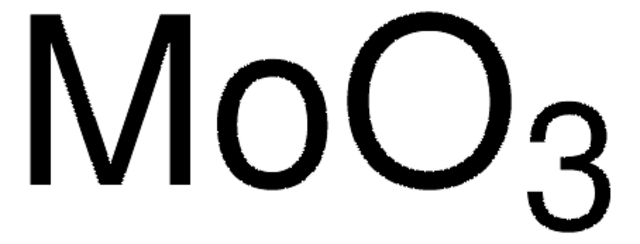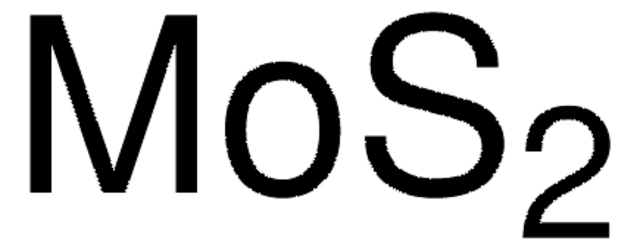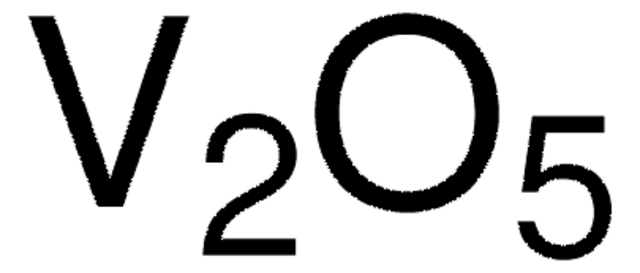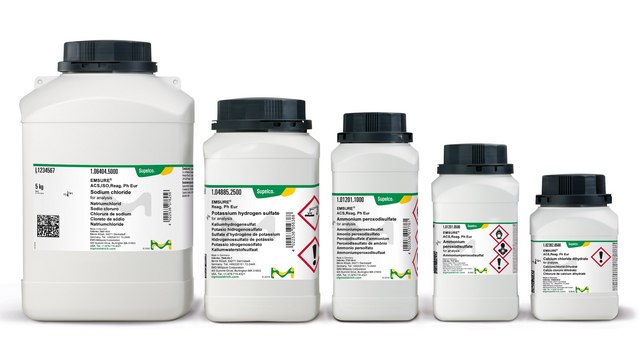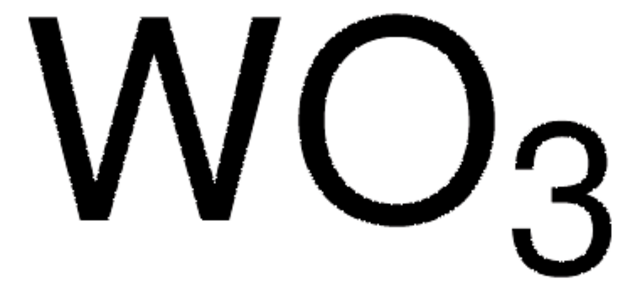All Photos(2)
About This Item
Linear Formula:
MoO2
CAS Number:
Molecular Weight:
127.94
EC Number:
MDL number:
UNSPSC Code:
12352303
PubChem Substance ID:
NACRES:
NA.23
Recommended Products
Quality Level
Assay
99%
form
powder
density
6.47 g/mL at 25 °C (lit.)
application(s)
battery manufacturing
SMILES string
O=[Mo]=O
InChI
1S/Mo.2O
InChI key
QXYJCZRRLLQGCR-UHFFFAOYSA-N
Looking for similar products? Visit Product Comparison Guide
Related Categories
General description
Molybdenum(IV) oxide (MoO2) is a transition metal oxide with good electrical conductivity due to the presence of delocalized electrons in its valence band. It is traditionally prepared by reducing MoO3 in dry hydrogen in the temperature range of 450-550°C.
Application
MoO2 can be used in a variety of energy based applications such as an anode material in rechargeable lithium batteries and fuel flexible solid oxide fuel cells. It can also be used as a catalyst in hydrogen reforming processes.
Storage Class Code
11 - Combustible Solids
WGK
WGK 1
Flash Point(F)
Not applicable
Flash Point(C)
Not applicable
Personal Protective Equipment
dust mask type N95 (US), Eyeshields, Gloves
Choose from one of the most recent versions:
Already Own This Product?
Find documentation for the products that you have recently purchased in the Document Library.
Ordered mesoporous metallic MoO2 materials with highly reversible lithium storage capacity
Shi Y, et al.
Nano Letters, 9(12), 4215-4220 (2009)
Synthesis and applications of molybdenum (IV) oxide
Ellefson CA, et al.
Journal of materials science & technology, 47(5), 2057-2071 (2012)
Sulfur poisoning of molybdenum dioxide during the partial oxidation of a Jet-A fuel surrogate
Marin-Flores O, et al.
Applied Catalysis. B, Environmental, 105(1-2), 61-68 (2011)
Tim Verhagen et al.
Nanoscale, 12(5), 3019-3028 (2019-12-14)
Characterization of the type and density of defects in two-dimensional (2D) transition metal dichalcogenides (TMDs) is important as the nature of these defects strongly influences the electronic and optical properties of the material, especially its photoluminescence (PL). Defect characterization is
Ding Zhou et al.
Nature communications, 5, 4716-4716 (2014-09-03)
Porous graphene, which features nano-scaled pores on the sheets, is mostly investigated by computational studies. The pores on the graphene sheets may contribute to the improved mass transfer and may show potential applications in many fields. To date, the preparation
Our team of scientists has experience in all areas of research including Life Science, Material Science, Chemical Synthesis, Chromatography, Analytical and many others.
Contact Technical Service